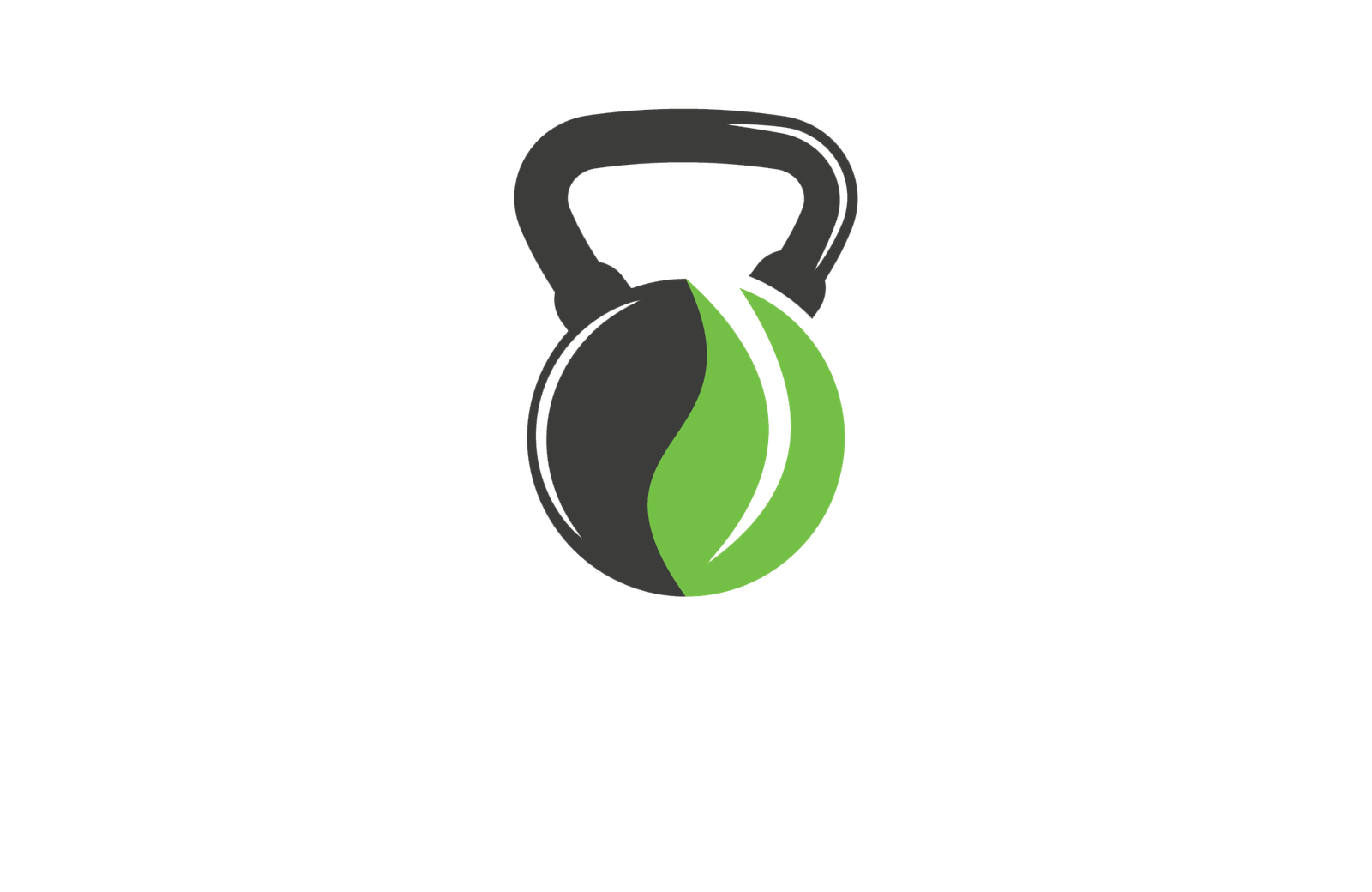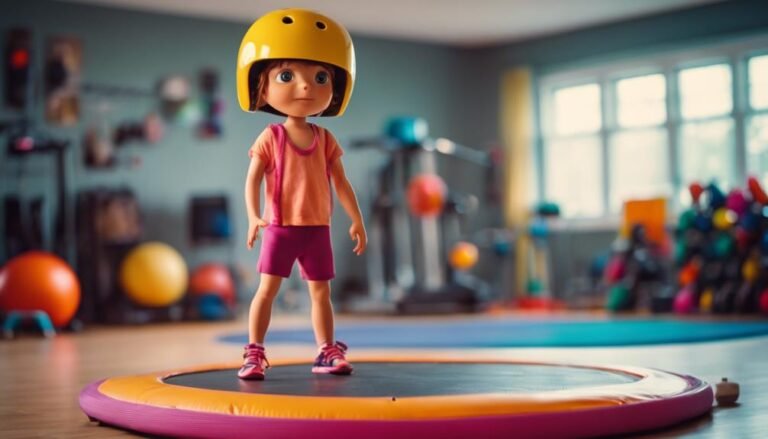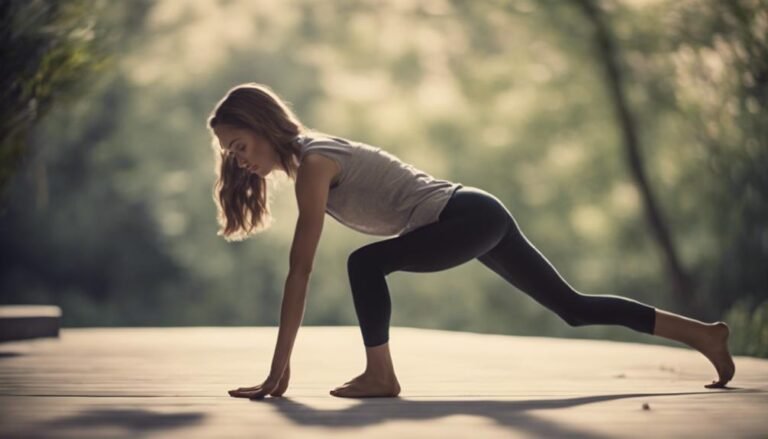Don't miss our holiday offer - 20% OFF!

Men’s Strength Training Workouts for Home Fitness
Push your limits with these powerful men's strength training workouts for home fitness, designed to unleash your full potential.
We're taking control of our fitness journey, building a strong foundation of strength and muscle mass from the comfort of our own homes. We're creating a dedicated space that fuels our passion for fitness, with essential equipment and a well-planned layout that boosts our energy and motivation. We're crafting effective workout routines that target our upper body, lower body, and core, using dumbbells, resistance bands, and bodyweight exercises. We're scheduling our workouts and tracking our progress, celebrating small wins and adjusting our strategy as needed. Now, let's dive deeper into our strength training journey and tap into our full potential.
Key Takeaways
- A well-equipped home gym with essential equipment and a solid sound system boosts energy and motivation during workouts.
- Effective upper body workouts target multiple muscle groups simultaneously with exercises like pushups, dumbbell presses, and lateral raises.
- A well-rounded lower body workout includes exercises that target the quadriceps, hamstrings, glutes, and calves, such as leg presses, squats, and lunges.
- Incorporating calf-strengthening exercises, like calf raises, and core exercises, like planks and Russian twists, into workout routines improves overall lower body strength and athletic performance.
- A structured workout schedule that outlines specific exercises, sets, reps, and rest days facilitates consistent progress and helps avoid plateaus in strength training.
Building a Home Gym Essentials
As we begin our strength training journey, we're going to need a solid foundation, and that starts with building a home gym equipped with the essential tools to help us achieve our fitness goals. We're not just talking about throwing some weights in a corner; we're talking about creating a dedicated space that motivates us to push ourselves to new heights. First and foremost, we need to think about safety, and that's where gym flooring comes in. A good floor mat can provide the necessary grip and cushioning to prevent injuries and reduce noise. Speaking of noise, a solid sound system can be a game-changer. Imagine blasting our favorite workout playlist to get us pumped up and energized. It's all about creating an environment that fuels our passion for fitness. With the right equipment and atmosphere, we'll be unstoppable. Let's get building and start crushing our fitness goals!
Upper Body Workout Routines
As we move forward with our strength training journey, we're excited to tackle the upper body workout routines that will help us build a stronger, more defined physique. We'll focus on exercises that target our chest, shoulders, and arms, using effective dumbbell workouts that we can easily do from the comfort of our own homes. By incorporating these exercises into our routine, we'll be on our way to building a stronger, more confident us.
Chest Exercises for Home
Let's kick off our chest exercises for home routine with some effective moves that'll help us build a stronger, more defined upper body. To understand how to target our chest muscles effectively, we need to know a bit about chest anatomy. The chest, or pectoralis major, is a large muscle group comprising the sternal head (chest muscle) and the clavicular head (upper chest muscle).
To engage these muscles, we'll focus on pushup variations. We'll start with the classic pushup, which targets the sternal head of the chest muscle. This exercise is a great foundation for building overall chest strength. Next, we'll move on to the diamond pushup, which shifts the focus to the triceps and the clavicular head of the chest muscle. This variation helps to build a more defined upper chest. By incorporating these exercises into our routine, we'll be on our way to building a stronger, more impressive chest. So, let's get started and take our upper body workout to the next level!
Effective Dumbbell Workouts
We're now ready to take our upper body workout to the next level by incorporating effective dumbbell workouts into our routine. Dumbbells are versatile and convenient, allowing us to target multiple muscle groups simultaneously. With a pair of dumbbells, we can work our chest, back, shoulders, and arms, making them an essential tool for a well-rounded upper body workout.
Here are some effective dumbbell exercises to add to our routine:
| Exercise | Muscle Group |
|---|---|
| Dumbbell Chest Press | Chest, Triceps |
| Dumbbell Bent Over Rows | Back, Biceps |
| Dumbbell Bicep Curls | Biceps |
To take our workout to the next level, we can incorporate different dumbbell variations, such as hammer curls, alternate dumbbell presses, and dumbbell lateral raises. We can also create a workout playlist to boost our energy and motivation. By incorporating dumbbells into our workout routine, we'll be on our way to building stronger, leaner muscles in no time.
Shoulder Muscle Building
Building strong shoulders is essential for a well-rounded upper body workout, and with targeted exercises, we can sculpt broad, powerful shoulders that enhance our overall physique. Understanding shoulder anatomy is key to effective training. Our shoulders are made up of three joints – the glenohumeral joint, acromioclavicular joint, and scapulothoracic joint – which work together to provide a wide range of motion. The rotator cuffs, comprising four muscles, play a vital role in stabilizing the shoulder joint and preventing injuries. To build strong shoulders, we need to target these muscles with exercises that work multiple planes of motion.
We can achieve this with exercises like dumbbell shoulder presses, lateral raises, and front raises, which hit the deltoids from different angles. We should also include exercises that target the rotator cuffs, such as cable rotations and shoulder blade squeezes. By incorporating these exercises into our workout routine, we can develop powerful, injury-resistant shoulders that enhance our overall upper body strength and stability. With consistent training and progressive overload, we can build broad, impressive shoulders that boost our confidence and overall fitness level.
Lower Body Exercise Programs
As we shift our focus to lower body exercise programs, we're excited to explore the key areas that'll help us build a stronger, more powerful foundation. We'll start by examining the essential leg muscle development exercises that'll get our legs working in harmony. From there, we'll move on to glute building exercises and calf strengthening routines that'll have us standing tall and proud.
Leg Muscle Development
Developing strong legs is crucial for overall athletic performance and everyday functional movements, so it's essential that we prioritize exercises that effectively target our quadriceps, hamstrings, glutes, and calves. We need to focus on exercises that work multiple leg muscles at once, as this will help prevent muscle imbalance and guarantee overall lower body strength. One of the most effective exercises for targeting multiple leg muscles is the leg press. This exercise allows us to lift heavy weights while minimizing the risk of injury, making it an excellent choice for those new to strength training. When performing the leg press, we need to make sure to use proper form and technique to avoid muscle imbalance. We should aim to do 3-4 sets of 8-12 reps to confirm we're challenging our muscles and promoting growth. By incorporating exercises like the leg press into our workout routine, we can develop strong, well-rounded legs that will improve our overall athletic performance and everyday functional movements.
Glute Building Exercises
We'll get ripped glutes by incorporating exercises that target our gluteus maximus, medius, and minimus muscles, which will not only improve our athletic performance but also enhance our overall lower body strength. Understanding our glute anatomy is essential in building strong, balanced glutes. We need to address muscle imbalances, where some glute muscles are stronger than others, to achieve ideal glute development.
Here are effective glute-building exercises to add to our workout routine:
| Exercise | Muscle Targeted | Sets/Reps |
|---|---|---|
| Squats | Gluteus Maximus | 3/8-12 |
| Lunges | Gluteus Medius | 3/10-15 |
| Deadlifts | Gluteus Maximus | 3/8-12 |
| Glute Bridges | Gluteus Minimus | 3/12-15 |
| Hip Thrusts | Gluteus Maximus | 3/10-12 |
Calf Strengthening Routines
Now that we've built a strong foundation in our glutes, let's move on to our calf muscles, which play a vital role in our overall lower body strength and athletic performance. Understanding calf anatomy is essential to effective strengthening. The two main muscles in our calf – gastrocnemius and soleus – work together to control ankle movement and propulsion. Weak calf muscles can lead to poor running form, increasing the risk of injuries and decreasing overall performance.
To build strong calf muscles, we'll focus on exercises that target both the gastrocnemius and soleus. One effective exercise is the calf raise, which can be done with or without weights. We'll start with three sets of 12-15 reps, gradually increasing the weight as we build strength. Another essential exercise is the calf press, which targets the soleus muscle. We'll aim for three sets of 10-12 reps.
For runners, strong calf muscles are vital for efficient propulsion and reducing the risk of injuries. By incorporating calf strengthening routines into our workout, we'll improve our running performance and overall lower body strength. Remember, consistent practice and gradual progression are key to achieving peak results. Let's get started and take our fitness to the next level!
Core Strengthening Exercises Guide
By incorporating a mix of exercises that target our transverse abdominis, obliques, and lower back, we can build a strong, stable core that enhances our overall athletic performance and reduces our risk of injury. A strong core is essential for functional movement, allowing us to generate power, speed, and agility in our daily activities and sports. It's about more than just having a six-pack; it's about building core stability that translates to real-world benefits.
We'll focus on exercises that engage our core muscles, improving our posture, balance, and overall athletic performance. We'll explore exercises that target our rotational strength, such as Russian twists and woodchoppers, which are essential for functional movement. We'll also work on exercises that challenge our core stability, like planks and side planks, to build a strong foundation. By incorporating these exercises into our workout routine, we'll be able to perform daily tasks with more efficiency and confidence, and take our athletic performance to the next level.
Bodyweight Training for Men
As we shift our focus from core strengthening exercises to bodyweight training, we're about to discover the ultimate convenience of working out anywhere, anytime, without relying on equipment or machines. We'll be using our own body weight as resistance to build strength, flexibility, and endurance. This type of training is perfect for men who want to stay fit while traveling, or for those who prefer working out in the comfort of their own homes.
What we love about bodyweight training is that it requires minimal to no equipment, making it super accessible. We can do push-ups, pull-ups, squats, and lunges anywhere, anytime. And the best part? We can track our progress by increasing the number of reps, sets, or decreasing rest time between exercises. This progress tracking helps us stay motivated and focused on our fitness goals.
To get the most out of bodyweight training, we need to shift our mindset. We need to believe that our bodies are capable of achieving great things, even without fancy equipment. With consistent effort and dedication, we can achieve amazing results. So, let's get started on this bodyweight training journey and discover the strength we never knew we had!
Dumbbell Workout Routines Explained
As we move forward in our strength training journey, we're excited to explore the world of dumbbell workout routines. We'll start with the basics, covering exercises perfect for beginners, and then move on to more advanced techniques for building muscle with dumbbells. By the end of this section, we'll have a solid grasp on how to create effective dumbbell workouts that drive results.
Dumbbell Exercises for Beginners
We're excited to explore the world of dumbbell exercises, a versatile and effective way to build strength and muscle mass, perfect for beginners looking to take their fitness journey to the next level. As we embark on the world of dumbbell exercises, we're committed to forming habits that will last a lifetime. By incorporating dumbbells into our workout routine, we can avoid plateaus and continue to challenge ourselves, even when we're working out from home.
For beginners, starting with exercises that target multiple muscle groups at once is crucial. We recommend starting with compound exercises like dumbbell squats, lunges, and chest presses. These exercises will help us build overall strength and endurance, setting us up for success as we progress in our fitness journey. By mastering these exercises, we'll be able to increase our strength and confidence, paving the way for more advanced exercises and a stronger, healthier body. With consistency and dedication, we can achieve our fitness goals and enjoy the many benefits that come with regular exercise.
Building Muscle With Dumbbells
With a solid foundation of compound exercises under our belt, we can now focus on building muscle with dumbbells through targeted workout routines that will help us achieve our strength training goals. Dumbbells offer a versatile way to target specific muscle groups, allowing us to address any muscle imbalances and create a more balanced physique.
To make the most of our dumbbell workouts, we must incorporate a variety of exercises and variations into our routine. Here are some examples of dumbbell exercises that can help us build muscle:
| Dumbbell Exercise | Targeted Muscle Group |
|---|---|
| Dumbbell Chest Press | Chest, Shoulders, Triceps |
| Dumbbell Rows | Back, Biceps |
| Dumbbell Shoulder Press | Shoulders, Triceps |
Resistance Band Exercises Guide
We'll kick off our strength training journey with resistance bands, a versatile and portable tool that can help us build strength and flexibility anywhere, anytime. One of the biggest advantages of resistance bands is their portability – we can take them with us wherever we go, making it easy to fit in a workout on the road or at home. This convenience is a major motivator, as we can stick to our fitness goals even with a busy schedule. Another benefit of resistance bands is the variety of exercises we can do with them. From bicep curls to chest presses, there are countless exercise variations to target different muscle groups. We can switch up our routine to keep things fresh and prevent plateaus. Plus, resistance bands are low-impact, making them easier on our joints compared to heavy weights. With resistance bands, we can work out at our own pace, increasing the intensity as we get stronger. Let's get started and see the results for ourselves!
Home Workout Space Optimization
Optimizing our home workout space allows us to create an environment that fuels our motivation and maximizes our strength training results. By planning our space effectively, we can guarantee a safe and efficient workout experience. We'll want to allocate enough space for our equipment, allowing us to move freely and comfortably. Consider the layout of our room and designate specific areas for different types of exercises. This space planning will help us stay focused and avoid distractions.
Noise reduction is also vital when working out at home. We don't want to disturb family members or neighbors, nor do we want to be distracted by external noise. Consider investing in sound-absorbing materials or exercising during less busy hours. By minimizing noise, we can create a more peaceful and conducive workout environment.
Creating a Workout Schedule
Our workout schedule becomes the roadmap to achieving our strength training goals, outlining specific exercises, sets, reps, and rest days to facilitate consistent progress and avoid plateaus. By planning our workouts, we guarantee we're targeting all major muscle groups, allowing for balanced growth and development. We'll start by identifying our workout goals – are we looking to build muscle, increase endurance, or boost overall fitness? Once we've established our objectives, we can create a structured schedule that aligns with our goals.
We'll use a fitness calendar to organize our workouts, scheduling specific exercises, sets, and reps for each day. This will help us stay on track, avoid confusion, and make adjustments as needed. A well-planned schedule also allows for adequate rest and recovery time, which is vital for muscle growth and repair. By sticking to our schedule, we'll be able to track our progress, make adjustments, and stay motivated. With a solid workout schedule in place, we'll be well on our way to achieving our strength training goals and enjoying the benefits of a stronger, healthier body.
Tracking Progress and Staying Motivated
By regularly tracking our progress, we're able to identify areas that need improvement, celebrate small victories, and stay motivated to continue pushing ourselves towards our strength training goals. This helps us refine our workout routine, making adjustments as needed to guarantee we're on the right track. To effectively track progress, we should be setting specific, measurable, and achievable goals. This goal setting process helps us create a roadmap for success, allowing us to focus on making incremental gains. A mindset shift is also vital – we need to stop focusing on perfection and instead, celebrate small wins. By doing so, we'll stay motivated and encouraged to continue pushing ourselves. Additionally, tracking progress helps us identify patterns and plateaus, allowing us to make adjustments and avoid stagnation. By combining goal setting with progress tracking, we'll be unstoppable in our pursuit of strength training excellence. So, let's get tracking and stay motivated to reach our full potential!
Frequently Asked Questions
Can I Do Strength Training if I Have a Prior Injury?
"We can still do strength training with a prior injury; we just need to focus on injury prevention strategies and modify exercises to accommodate our limitations, ensuring a safe and effective workout."
How Often Should I Rest and Recover Between Workouts?
"We know it's tempting to push ourselves, but we must prioritize rest and recovery between workouts to avoid overtraining risks. We fuel our bodies with post-workout nutrition, allowing us to bounce back stronger and more energized."
Will I See Results if I Only Work Out at Home?
"We can achieve remarkable results working out at home, as long as we're consistent and progressive in our overload, pushing ourselves to new heights with each session – it's not about the gym, it's about our dedication!"
Can I Use Household Objects as Substitutes for Weights?
It's tempting to think 'I need fancy equipment to see results,' but it's a commonly held belief that we can create our own weight alternatives using household objects, and it's a game-changer for our fitness journey.
Is It Necessary to Warm up and Cool Down During Exercise?
We know it's tempting to get started with our workouts, but we can't stress enough the importance of warming up with flexibility exercises and muscle activation to prevent injuries and optimize performance, and cooling down to aid recovery.
Conclusion
As we wrap up our home fitness journey, remember that every small step counts. Did you know that just 10-15 minutes of strength training daily can increase your lifespan by 3-7 years? That's a significant gain for a minimal time investment. Stay committed, and we'll be flexing our muscles in no time. By following these workout routines and tips, we'll be on our way to a stronger, healthier us. Let's keep pushing and reach new heights!



